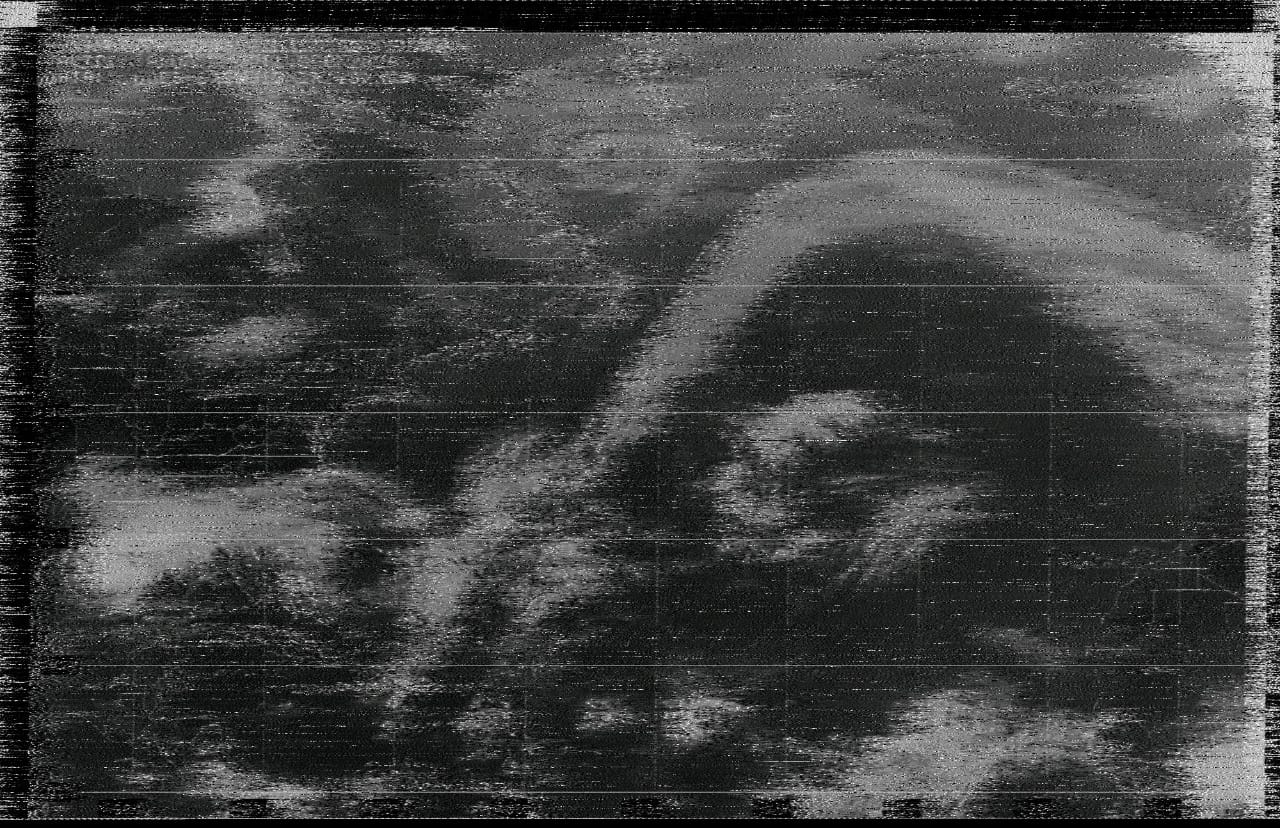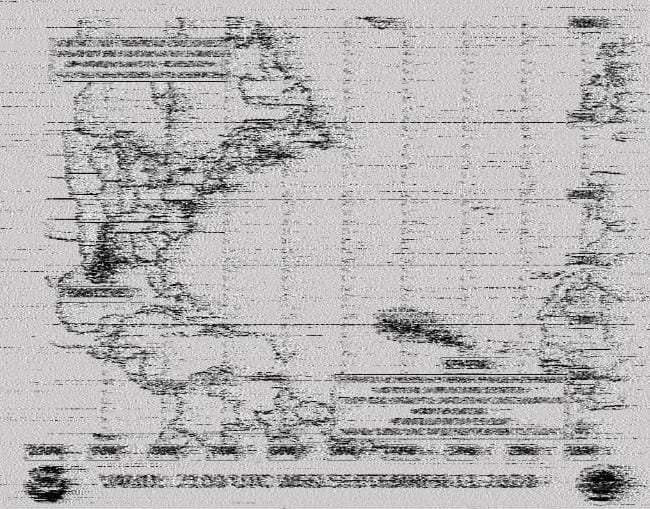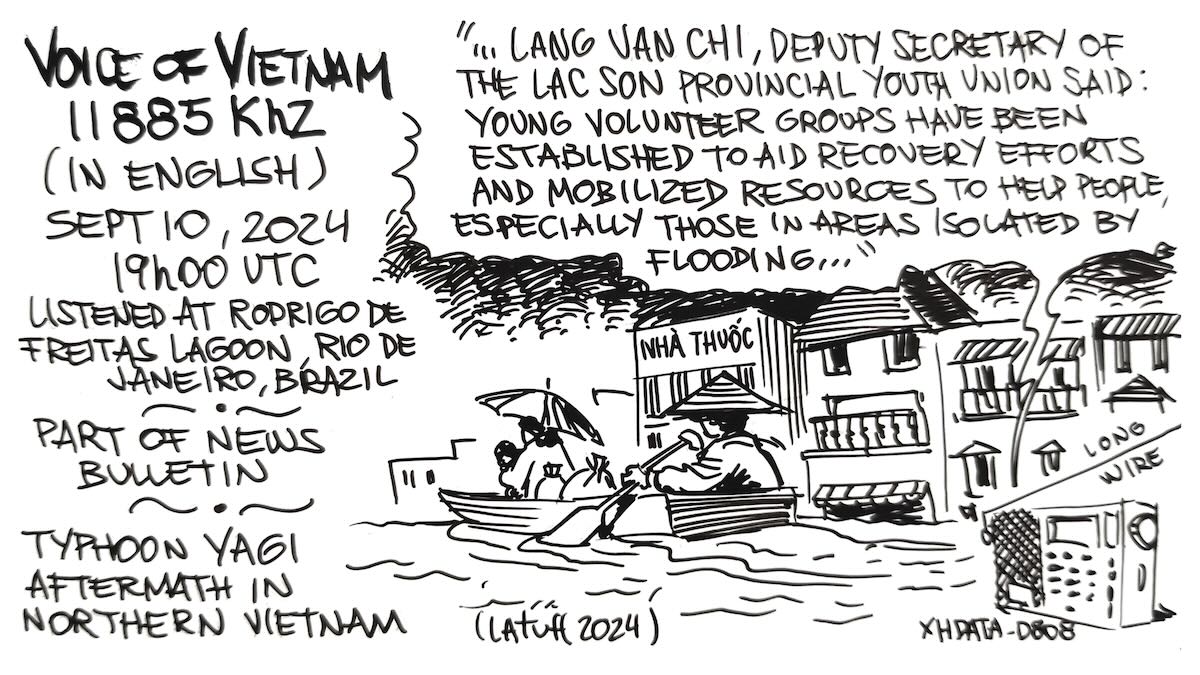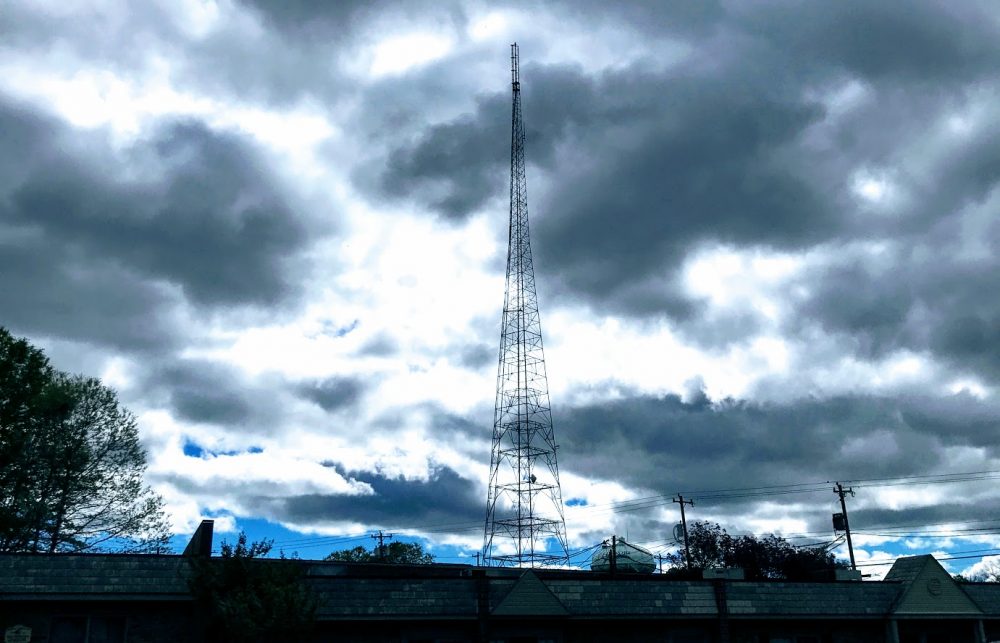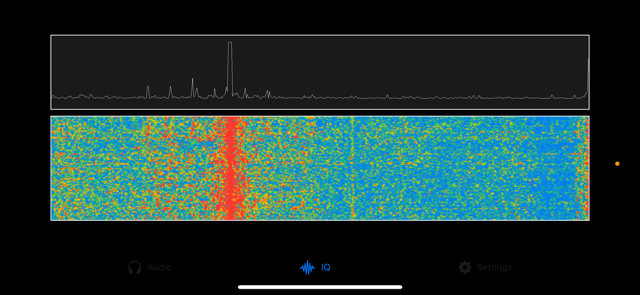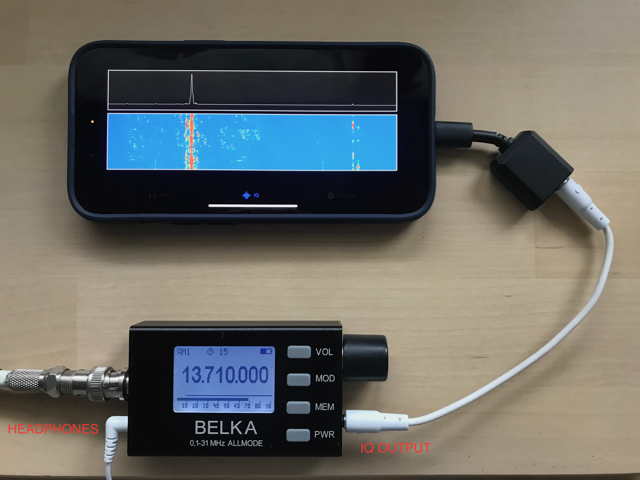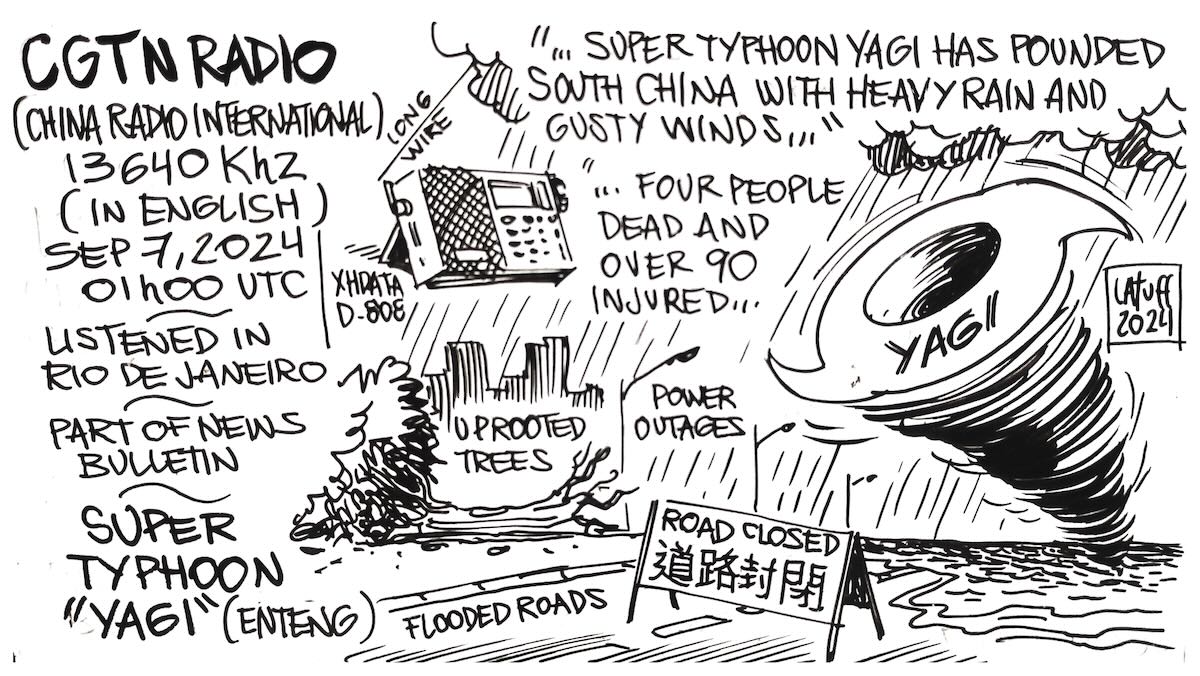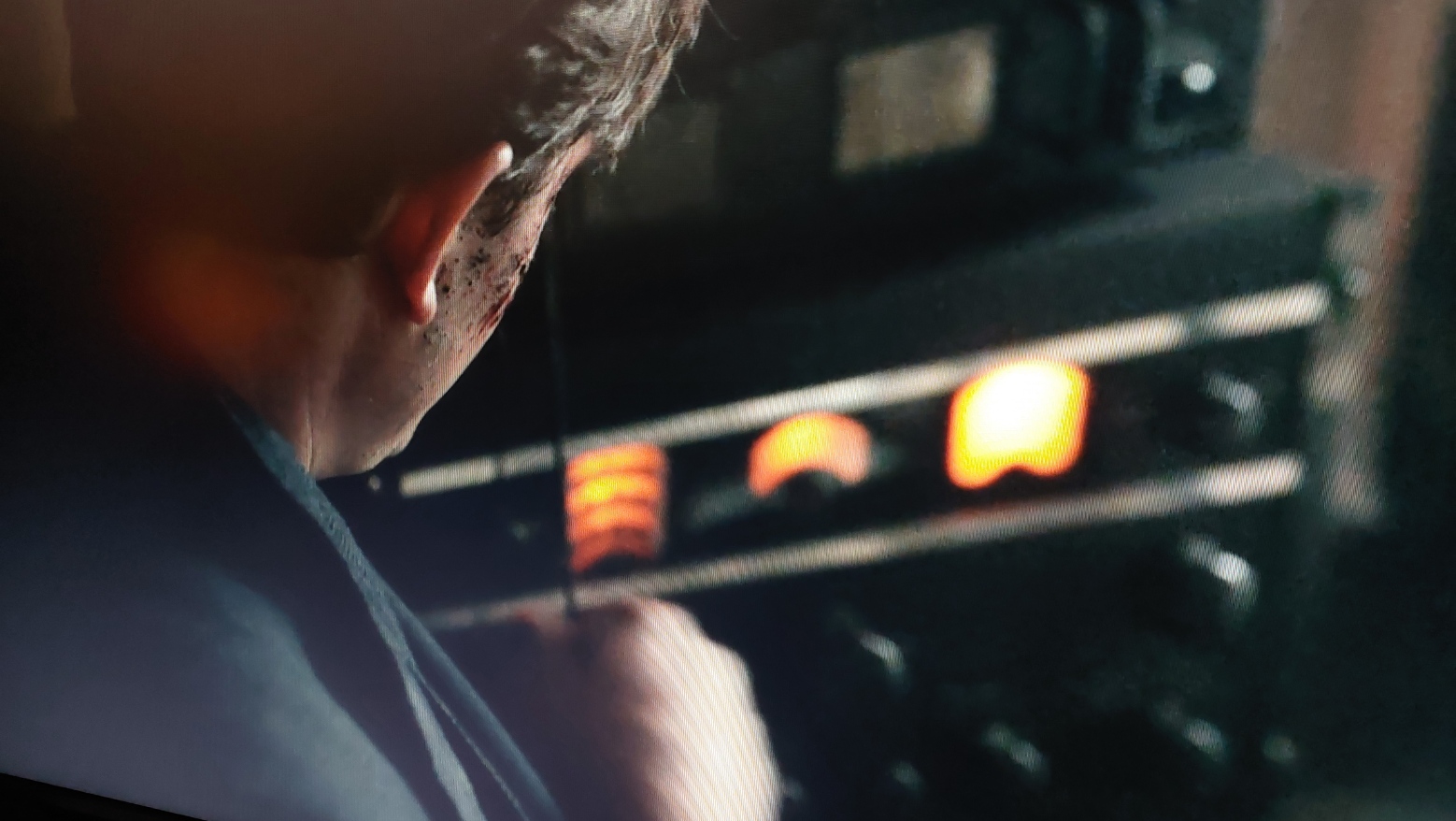Many thanks to SWLing Post contributor and noted political cartoonist, Carlos Latuff, who shares his radio log art of a recent Voice of Vietnam broadcast.
Carlos notes:
Excerpt from the news bulletin of the “Voice of Vietnam” radio on Typhoon Yagi, September 11, 2024.
Click here to view on YouTube.
(Original in Spanish and translation for English follows)
“…En la reunión del Gobierno sobre la elaboración de leyes, celebrada este miércoles, el primer ministro Pham Minh Chinh pidió a los ministerios, ramas y localidades que movilicen a todo el sistema político para actuar y adoptar todas las medidas necesarias para responder y superar las consecuencias, especialmente las inundaciones y deslizamientos de tierra provocados por el tifón Yagi.
También invitó a redoblar los esfuerzos para buscar soluciones, por todos los medios fluviales, terrestres y aéreos, para acceder y satisfacer las necesidades básicas de las zonas aisladas, con alimentos, bebidas, agua y medicinas.
Según el Departamento de Manejo de Diques y Prevención y Control de Desastres Naturales (Ministerio de Agricultura y Desarrollo Rural), debido al impacto del tifón Yagi y las inundaciones posteriores a esta tormenta, hasta la una y media del 11 de septiembre se registraron 296 personas muertas o desaparecidas.
Mientras tanto, la comunidad vietnamita en el extranjero también ofrece apoyo activo a sus compatriotas en el país. La Embajada de Vietnam y asociaciones vietnamitas en Japón lanzaron ayer una campaña para recaudar donaciones de apoyo a las personas afectadas por el tifón Yagi…”
“…El presidente venezolano, Nicolás Maduro, expresó su solidaridad con el Gobierno y el pueblo de Vietnam ante los graves daños humanos y materiales provocados por el súper tifón Yagi, y envió su más sentido pésame a los familiares de las víctimas de la catástrofe natural. En declaraciones al canal Venezolana de Televisión (VTV), el ministro del Poder Popular para las Relaciones Exteriores de Venezuela, Yván Gil Pinto, transmitió el mensaje del presidente Maduro al Gobierno y pueblo vietnamitas, enfatizando que su país seguirá monitoreando los acontecimientos tras el paso del tifón y está dispuesta a apoyar la nación indochina para superar las consecuencias provocadas por Yagi…”
“…Por otra parte, la Dirección Nacional de los Comités de Defensa de la Revolución de Cuba (CDR) mostró su confianza en que con el esfuerzo de todo el pueblo Vietnam se recuperará de los daños causados por el tifón Yagi. En el mensaje de condolencias dirigido al presidente del Frente de la Patria de Vietnam, Do Van Chien, la mayor organización de masas cubana expresó su profundo pesar ante la pérdida de vidas humanas y daños materiales provocados por esta catástrofe meteorológica en el norte vietnamita. A través de su misiva, los CDR transmitieron sus más sentidas condolencias al pueblo y Gobierno de ese país hermano, así como a los familiares y allegados de las víctimas. El mensaje reafirmó la solidaridad y hermandad del pueblo cubano con el pueblo vietnamita.
Hasta el momento, Yagi dejó tras su paso un saldo de más de 140 víctimas mortales y otros 59 desaparecidos en Vietnam, además dañó miles de hectáreas de cultivos y árboles e infraestructuras en varias localidades…”
—————————————————-
“…At the Government meeting on lawmaking held on Wednesday, Prime Minister Pham Minh Chinh called on ministries, branches and localities to mobilize the entire political system to act and take all necessary measures to respond to and overcome the consequences, especially the floods and landslides caused by Typhoon Yagi.
He also called on them to redouble efforts to find solutions, by all river, land and air means, to access and meet the basic needs of isolated areas, with food, drinks, water and medicine.
According to the Department of Dike Management and Natural Disaster Prevention and Control (Ministry of Agriculture and Rural Development), due to the impact of Typhoon Yagi and the floods following this storm, 296 people had died as of 1:30 a.m. on September 11 or missing.
Meanwhile, the Vietnamese community abroad is also actively supporting their compatriots at home. The Vietnamese Embassy and Vietnamese associations in Japan launched a campaign yesterday to collect donations to support those affected by Typhoon Yagi…”
“…Venezuelan President Nicolas Maduro expressed his solidarity with the Government and people of Vietnam in the face of the serious human and material damage caused by Super Typhoon Yagi, and sent his deepest condolences to the families of the victims of the natural disaster. In statements to the Venezuelan Television channel (VTV), the Minister of People’s Power for Foreign Relations of Venezuela, Yván Gil Pinto, transmitted the message of President Maduro to the Vietnamese Government and people, emphasizing that his country will continue to monitor the events after the passage of the typhoon and is willing to support the Indochinese nation to overcome the consequences caused by Yagi…”
“…On the other hand, the National Directorate of the Committees for the Defense of the Cuban Revolution (CDR) expressed its confidence that with the effort of all the people Vietnam will recover from the damage caused by typhoon Yagi. In the message of condolences addressed to the president of the Vietnam Fatherland Front, Do Van Chien, the largest Cuban mass organization expressed its deep regret at the loss of human lives and material damage caused by this meteorological catastrophe in northern Vietnam. Through its letter, the CDR transmitted its most heartfelt condolences to the people and Government of that sister country, as well as to the families and friends of the victims. The message reaffirmed the solidarity and brotherhood of the Cuban people with the Vietnamese people.
So far, Yagi has left behind a balance of more than 140 fatalities and another 59 missing in Vietnam, in addition to damaging thousands of hectares of crops and trees and infrastructure in several localities…”


